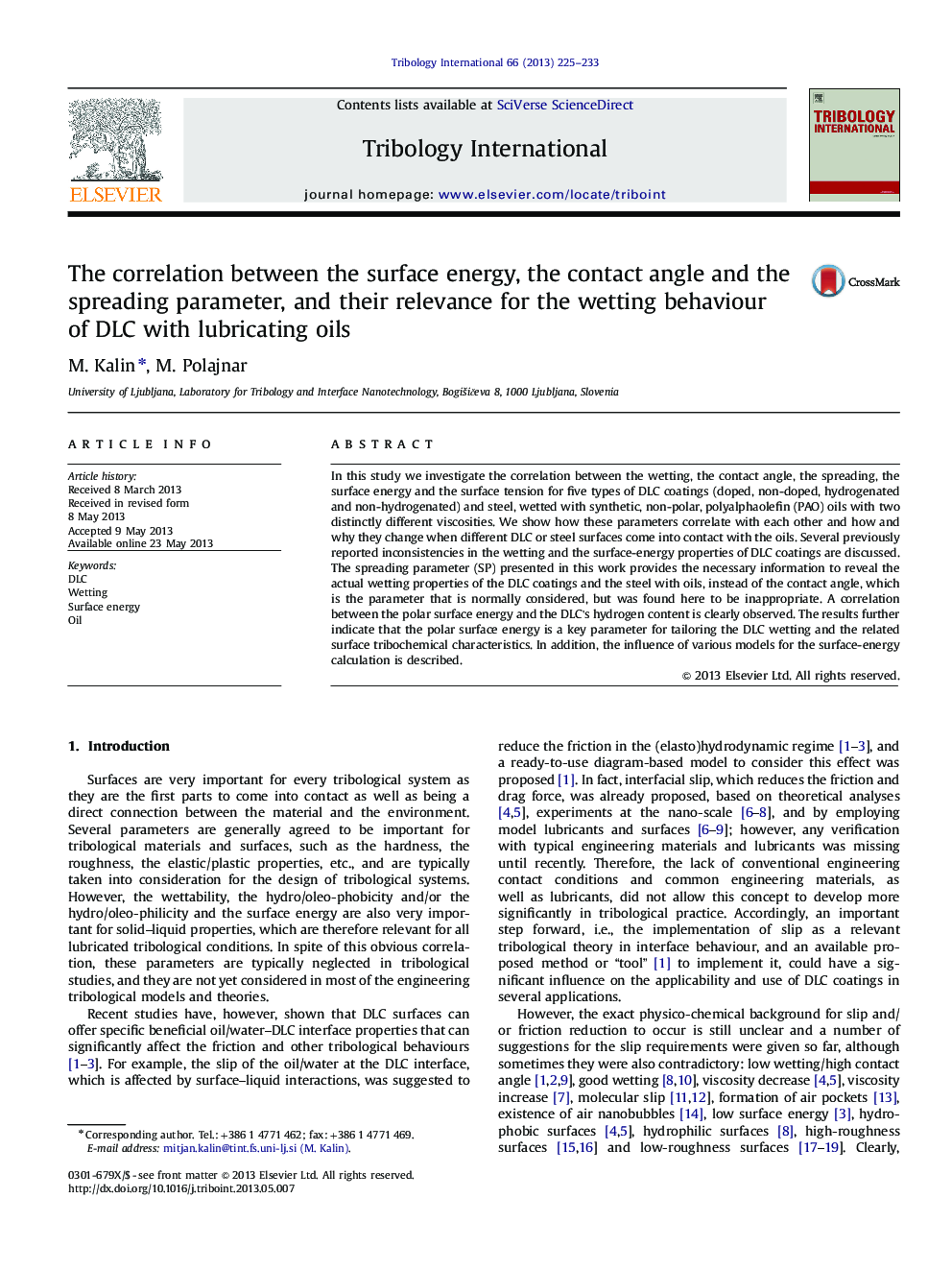| Article ID | Journal | Published Year | Pages | File Type |
|---|---|---|---|---|
| 614956 | Tribology International | 2013 | 9 Pages |
•Wetting properties of several DLC coatings with oils are investigated.•The spreading parameter provides the key information about the DLC wetting.•The DLC coatings do not have a “much” lower total surface energy than the steel.•Polar surface energy plays crucial role in tailoring the DLC wetting properties.
In this study we investigate the correlation between the wetting, the contact angle, the spreading, the surface energy and the surface tension for five types of DLC coatings (doped, non-doped, hydrogenated and non-hydrogenated) and steel, wetted with synthetic, non-polar, polyalphaolefin (PAO) oils with two distinctly different viscosities. We show how these parameters correlate with each other and how and why they change when different DLC or steel surfaces come into contact with the oils. Several previously reported inconsistencies in the wetting and the surface-energy properties of DLC coatings are discussed. The spreading parameter (SP) presented in this work provides the necessary information to reveal the actual wetting properties of the DLC coatings and the steel with oils, instead of the contact angle, which is the parameter that is normally considered, but was found here to be inappropriate. A correlation between the polar surface energy and the DLC's hydrogen content is clearly observed. The results further indicate that the polar surface energy is a key parameter for tailoring the DLC wetting and the related surface tribochemical characteristics. In addition, the influence of various models for the surface-energy calculation is described.
Graphical abstractFigure optionsDownload full-size imageDownload high-quality image (63 K)Download as PowerPoint slide
